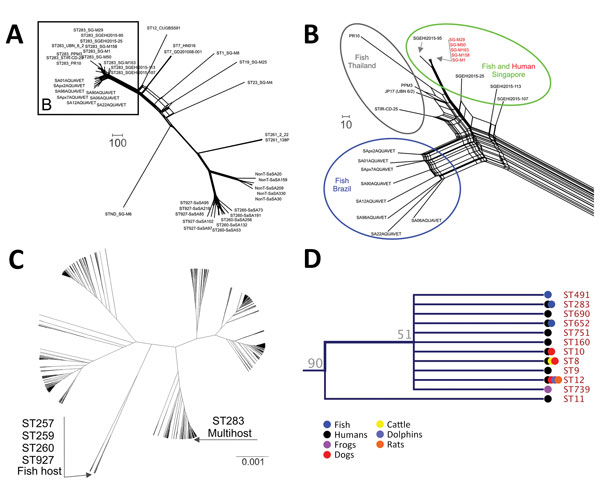Volume 25, Number 4—April 2019
Dispatch
Streptococcus agalactiae Sequence Type 283 in Farmed Fish, Brazil
Figure 2

Figure 2. Phylogenetic analyses of Streptococcus agalactiae strains. A) Phylogenomic neighbor network of whole-genome multilocus sequence typing data of 45 group B Streptococcus (GBS) strains. Scale bar measures 10 different alleles between the isolates. B) Magnified image from panel A showing GBS ST283 phylogenomic splits. Isolates obtained from clinical cases of diseased fish in Brazil (blue circle) and Thailand (gray circle) and isolates from foodborne outbreaks in Singapore (green circle). Scale bar measures 100 different alleles between the isolates. C) Phylogenetic relationship of all GBS STs concatenated using CLC Genomics Workbench (QIAGEN, https://www.qiagen.com) and generated using UPGMA (unweighted pair group method with arithmetic mean). GBS strains isolated exclusively from fish are genetically distant from ST283 cluster. Scale bar measures nucleotide substitutions per site. D) ST283 clade comprises multihost strains. ST, sequence type.